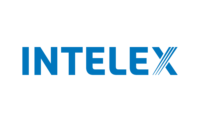Voice of the Customer: A Tool for Continual Improvement
Gather and use information that improves an organization.

According to the ASQ Quality Glossary, voice of the customer (VOC) is defined as, “The expressed requirements and expectations of customers relative to products or services, as documented and disseminated to the providing organization’s members.” VOC is a process for capturing customers’ requirements. It produces a detailed set of customer wants and needs which are organized into a hierarchical structure, and then prioritized in terms of relative importance and satisfaction with current alternatives. A systematic approach to translating the voice of the customer into the voice of the engineer (VOE) has been the strength of quality function deployment since its inception.
Three Common VOC Challenges (Insight 2016)
There are three anticipated results from a VOC data gathering exercise (Cudney 2016):
- Likely satisfiers: Needs known to and voiced by customers.
- Likely dissatisfiers: Needs known to but not voiced by customers.
- Likely delighters: Needs that customers are unaware of.
Identifying these anticipated results, we can identify the three common challenges as:
Collecting, storing, and accessing customer data.
Relying on market research surveys. VOC is about current customers, not the market as a whole, and surveys are a lagging indicator.
The data itself. Data accuracy and quality is of the utmost importance.
Building an Effective Voice of the Customer Program
The key to creating an effective VOC program is to gather and use information in a timely way that improves an organization. Organizations often have multiple touchpoints with the customer that occur all across the organization (including sales, support, warranty, and accounting interactions). Here are four key areas to consider when building your VOC program:
Capture: It’s important to identify customer listening posts both internally and externally. Surveys are the easiest and most common way to establish listening posts across all customer touchpoints and departments.
Analyze: After capturing key insights, analyze feedback in real time. It’s important to deliver clear and actionable insight to the right employee stakeholders.
Act: Successful VOC programs put you in the best position to act on real-time insight. Identifying the problem areas allows your team to take corrective action.
Monitor: Continuous monitoring helps you track your results over time. Having a real-time pulse on your customers helps you uncover patterns to identify enterprise-wide improvement areas.
Tools for Conducting VOC Programs
There are two basic types of VOC data. The first is called reactive data and can be found as customer complaints, compliments, feedback, hotline data, product returns, and/or warranty claims. This data is usually negative but represents significant improvement opportunities. For example, it is likely that a customer complaint occurs after the person experiences a product or service dissatisfier multiple times. Other dissatisfied customers may not announce a complaint and just immediately switch to a competitor.
The second data type is called proactive data and can be collected from customer interviews, surveys, focus groups, observations, and/or test customers. This data type can also identify important improvement opportunities.
Best Sources of VOC Data
Voice of the customer data-gathering techniques can be qualitative and quantitative. A truly complete picture of the customer experience must be derived from multiple data sources. Each have their strengths and their pitfalls, but when combined they ensure companies can hear the customer’s voice loud and clear. Integrating all these sources of customer intelligence make it much easier for decision makers to understand the reality of their situation and act accordingly. As noted above, VOC data is usually collected either through frequency and expense data from reports (e.g., warranty claims, number of complaints, etc.) or from actual customer interactions (e.g., customer interviews, focus groups, etc.). The following list introduces three traditional techniques using customer interaction and a grouping of advanced methods utilizing data and quality methods.
Interviews provide a specific customer point of view regarding product or service issues, attributes, and performance measures.
Customer surveys measure the performance of a product, service, or attribute across an entire customer segment or group of segments. Surveys are typically completed by customers through an online form, phone call, or via survey software (including Qualtrics and SurveyMonkey).
Focus groups bring together potential customers within the demographic area that the company wants to target. While gathered in a room, the focus group members are asked to share their perceptions, beliefs, and opinions about a product or service.
Advanced methods of VOC data collection include benchmarking industry market leaders and the use of Kano analysis to identify customer dissatisfiers, satisfiers, and delighters.
The importance of VOC cannot be over-emphasized; it remains the key live wire of any organization that wishes to continue to remain in business and exceed their customer requirements.
Looking for a reprint of this article?
From high-res PDFs to custom plaques, order your copy today!







